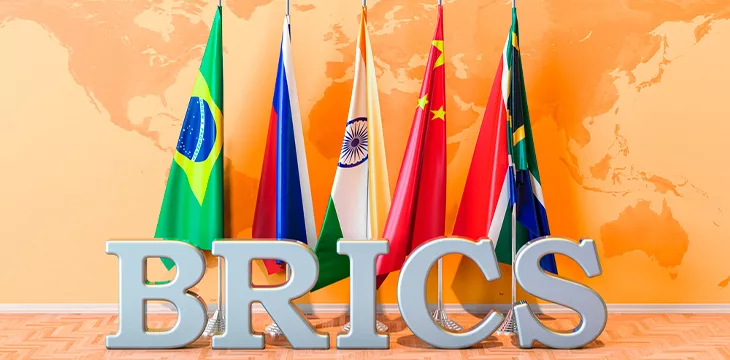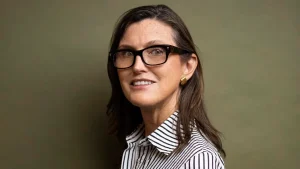Just-In: Russia Plans To Launch 2 Crypto Exchanges & BRICS Stablecoin

HIGHLIGHTS
- Russia is set to launch two new crypto exchanges in Moscow and St. Petersburg to boost foreign economic engagement.
- These exchanges will concentrate on developing stablecoins linked to the Chinese yuan and the BRICS currency basket.
- Experts caution that significant risks could arise from sanctions and the possibility of transaction data leaks.
Russia is preparing to launch two new crypto exchanges, one in Moscow and the other in St. Petersburg, to enhance foreign economic activity (FEA). The initiative includes plans to develop a stablecoin linked to the Chinese yuan and the BRICS currency basket.
These exchanges aim to offer a fresh platform for digital transactions. Nonetheless, experts have raised concerns about potential limitations and risks, especially considering the impact of international sanctions.
Russia’s Plans for Developing the Crypto Sector
According to a report by Kommersant, one of Russia’s planned crypto exchanges is likely to utilize the infrastructure of the St. Petersburg Currency Exchange (SPCE) to enhance foreign economic activity, while the other is expected to be established in Moscow. It remains uncertain whether the Moscow-based exchange will be integrated with the existing Moscow Exchange or operate as a separate entity within a new legal framework.
The primary objective of these exchanges is to develop and promote stablecoins. Stablecoins are cryptocurrencies typically pegged to a reserve of assets, such as a national currency or a basket of currencies. In this instance, the Russian government is reportedly considering stablecoins linked to the Chinese Renminbi (RMB) Yuan and the BRICS currency basket.
This initiative aims to foster economic cooperation among BRICS nations (Brazil, Russia, India, China, and South Africa) and support their push towards dedollarization through crypto and blockchain technology. However, launching BRICS stablecoins via these new exchanges involves several challenges.
Oleg Ogienko, CEO of BitRiver, highlighted the technological hurdles in integrating stablecoins into Russia’s blockchain infrastructure. He pointed out that “stablecoins, due to their legal nature, are more akin to cryptocurrency,” which could complicate their convertibility, liquidity, and security. These challenges may impede the smooth adoption of stablecoins in Russia.
Current Regulatory Framework & Challenges for Crypto Exchanges
Russia’s regulatory landscape for digital assets is currently governed by Federal Law No. 259 “On Digital Financial Assets,” which provides a legal framework for the issuance and circulation of digital assets. However, this law does not specifically address the creation or regulation of cryptocurrency exchanges.
Yaroslav Schitzle from the law firm Rustam Kurmaev and Partners noted that there is no “clear and unified legal mechanism for the establishment and operation of crypto exchanges” within the existing regulatory framework. The only pertinent regulation is the recently enacted Experimental Legal Regime (EPR), which could potentially serve as the legal basis for these new exchanges.
The launch of the crypto exchanges is expected to occur in phases, with initial access limited to a select group of users, including subsidiaries of major exporters and importers, commonly known as “blue chips.”
Mikhail Uspensky, a member of the expert council on cryptocurrency legislation in the State Duma, indicated that it is unlikely that small and medium-sized businesses or individual users will have unrestricted access in the early stages. He also emphasized that “the contours of the future experiment are entirely at the mercy of the regulator.”
Implications of Global Sanctions
While the project offers potential benefits, it faces significant risks, especially related to global sanctions. The transparency of blockchain technology means that leaked transaction data could have severe repercussions.
Uspensky cautioned that if it becomes known that a cryptocurrency was purchased through a Russian exchange, it could be tracked and flagged as suspicious, potentially leading to transaction blocks. He warned that this could “significantly ruin the lives” of those involved in these transactions.
Additionally, the impact could extend to future holders of these digital assets who might have no direct ties to Russia. Nikita Vassev, founder of TerraCrypto, also expressed doubts about the attractiveness of these domestic exchanges, suggesting that “only those with no other choice will use such an exchange.” Vassev believes that established, internationally recognized trading platforms will continue to be the preferred option for most users unless they are left with no alternatives.
In contrast, India’s BRICS counterpart, India, is preparing to advance its crypto regulatory efforts. The Indian government is currently seeking public input to refine its framework, with the Digital Assets Regulatory Authority (DEA) release expected between September and October to set the foundation for digital asset regulation in the country.











